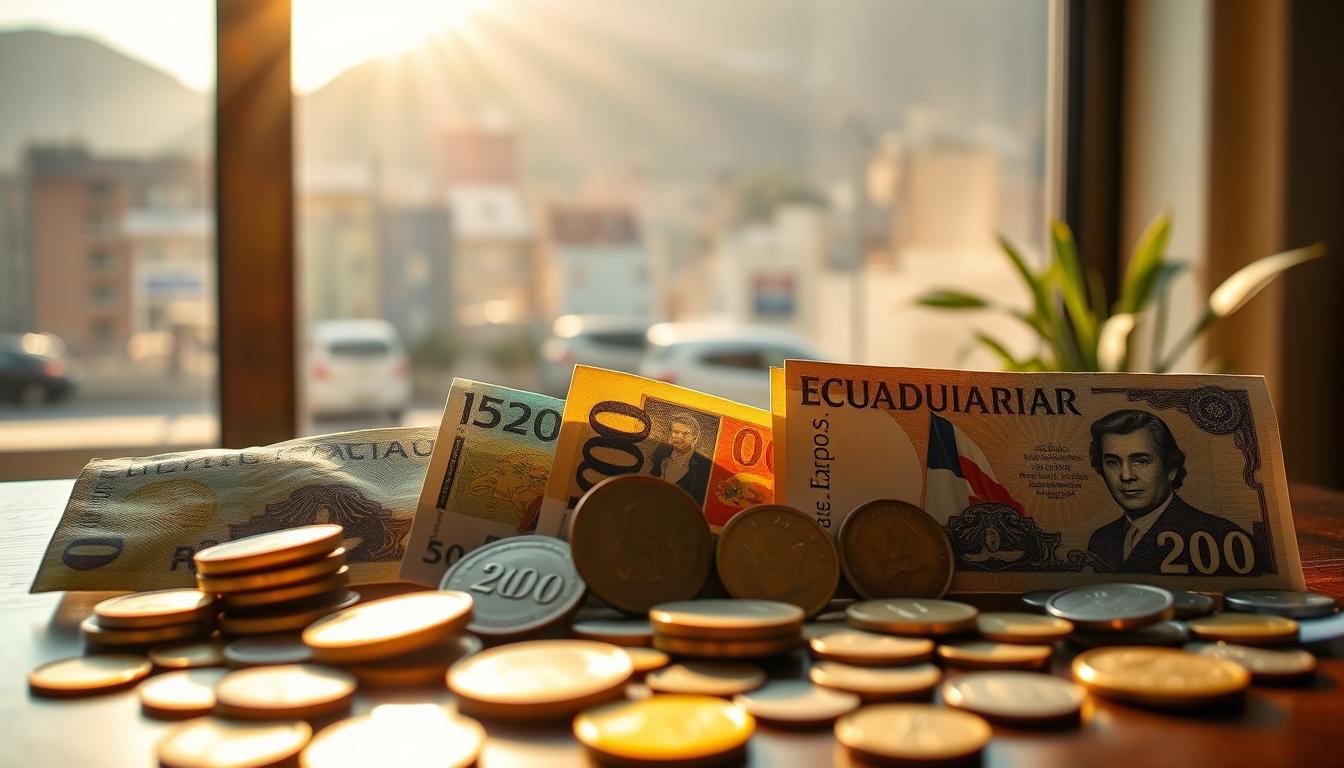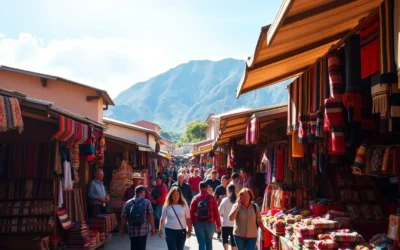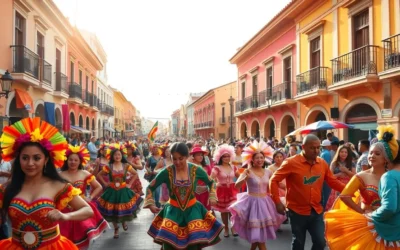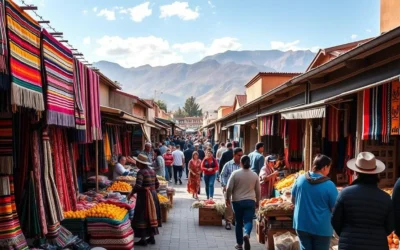✓ Accommodations ✓ Flights ✓ Rental Cars ✓ Tours & Activities
Did you know that Ecuador is one of only three countries in the world that uses the US dollar as its official currency? This unique choice simplifies money management for visitors, especially those from the United States.
In 2000, Ecuador made the switch from the Sucre to the USD to stabilize its economy. This decision has made travel planning easier, as you won’t need to worry about exchanging currency or dealing with fluctuating rates.
This guide will walk you through everything you need to know about handling money in Ecuador. From practical tips on using ATMs to avoiding fees, we’ve got you covered. Let’s dive in and make your trip hassle-free!
Overview of Ecuador’s Money Scene
Navigating the money scene in Ecuador is surprisingly straightforward, thanks to its use of the US dollar. This decision, made in 2000, has made daily transactions and trip planning much easier for visitors. Whether you’re shopping, dining, or exploring, you’ll find handling finances here simple and stress-free.

Why the US Dollar Makes Traveling Simple
Using the US dollar eliminates the need for currency conversion. This means you can focus on enjoying your trip instead of worrying about fluctuating exchange rates. ATMs are widely available, and most places accept credit cards, making it easy to access your funds.
Carrying some cash is also a good idea, especially in smaller towns or markets. With transparent exchange rates, budgeting becomes a breeze. This setup ensures you’re always in control of your spending.
Key Facts About Ecuadorian Currency
Ecuador’s switch to the US dollar was a response to economic instability in the late 1990s. Before 2000, the sucre was the national currency, but hyperinflation led to its replacement. Today, the dollar provides stability and simplifies transactions for both locals and visitors.
Here’s a quick comparison of using cash versus cards in Ecuador:
| Method | Benefits |
|---|---|
| Cash | Accepted everywhere, ideal for small purchases, no transaction fees. |
| Cards | Convenient for larger expenses, widely accepted in cities, secure. |
By understanding these basics, you can make informed decisions about how to handle your money during your stay. Whether you prefer cash or cards, Ecuador’s financial system is designed to make your experience seamless.
Historical Evolution of Currencies in Ecuador
The story of Ecuador’s currency is a tale of economic resilience and transformation. Over the centuries, the country has seen significant changes in its monetary systems, each shaping its financial landscape. From colonial coins to the adoption of the US dollar, Ecuador’s journey reflects its ability to adapt to economic challenges.
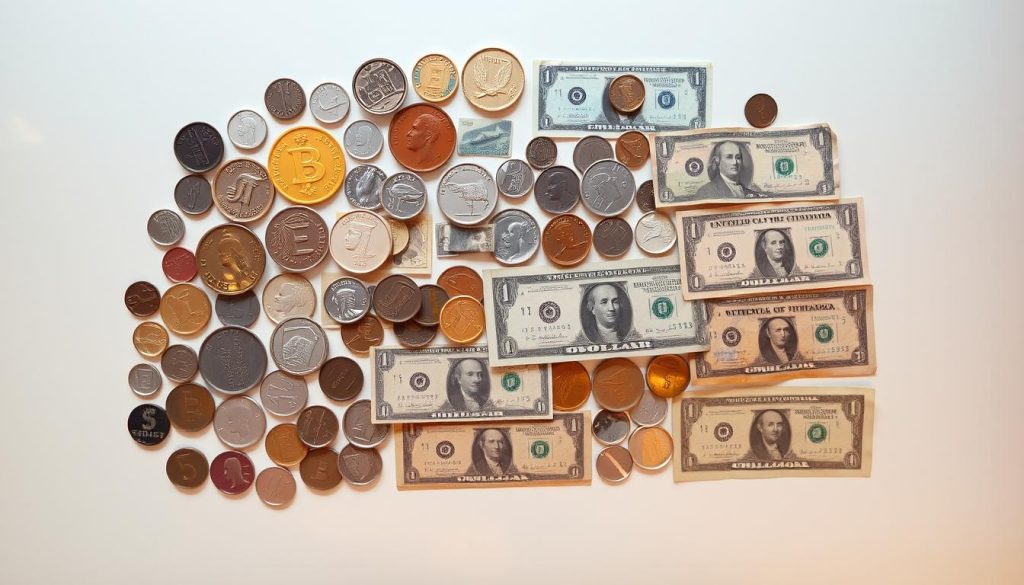
From the Sucre to the US Dollar Transformation
In 2000, Ecuador made a bold move by replacing its national currency, the sucre, with the US dollar. This decision came after years of hyperinflation and economic instability. By 1999, the exchange rate had skyrocketed to 25,000 sucres per US dollar, making daily transactions nearly impossible for locals.
The switch to the dollar stabilized the economy and simplified transactions for both residents and visitors. Today, the US dollar is widely accepted, and you’ll find familiar bills and coins in circulation. This change has made financial planning easier for travelers and businesses alike.
Insights into Ecuador’s Past Monetary Systems
Before the sucre, Ecuador used currencies like the Real and the Escudo during its colonial period. These early systems laid the foundation for the country’s financial structure. However, economic challenges in the 20th century led to the adoption of the sucre, which eventually faced severe devaluation.
Here’s a quick look at key moments in Ecuador’s monetary history:
| Period | Currency | Key Event |
|---|---|---|
| Colonial Era | Real, Escudo | Introduction of European monetary systems. |
| 1884–2000 | Sucre | National currency established, later replaced due to hyperinflation. |
| 2000–Present | US Dollar | Adopted to stabilize the economy and simplify transactions. |
Understanding this history helps you appreciate the stability of Ecuador’s current financial system. Whether you’re withdrawing cash from a bank or making a purchase, the country’s monetary evolution ensures a seamless experience.
Ecuador: Ultimate Travelers Guide to Currencies & Payments
Understanding how the US dollar impacts your trip can make your experience smoother and more enjoyable. With the dollar as the official currency, budgeting becomes straightforward, and you can avoid the hassle of currency conversion. This setup ensures your focus remains on exploring and enjoying your journey.
Using Debit and Credit Cards
Using a debit card or credit card is convenient for most transactions, especially in cities. However, be aware of potential transaction fees when using cards. Some banks charge international fees, so check with your provider before your trip.
For larger purchases, using credit is a smart choice. It’s secure and often comes with added benefits like travel insurance. Keep in mind that smaller towns or markets may prefer cash, so always carry some for flexibility.
When to Use Cash vs. Cards
Carrying cash is essential for small purchases, tips, and places that don’t accept cards. On average, budget travelers spend around $38 daily, so having small bills on hand is practical. For mid-range or luxury travelers, cards are ideal for higher expenses like accommodations or dining.
Here’s a quick guide to help you decide:
| Payment Method | Best For |
|---|---|
| Cash | Small purchases, tips, markets |
| Cards | Larger expenses, online bookings |
Navigating Online Transactions
Online payments are seamless with the US dollar. Booking tours, accommodations, or flights is hassle-free, and you won’t face currency conversion issues. However, double-check for additional fees when using credit for online purchases.
By understanding these nuances, you can plan your payments efficiently and avoid unnecessary costs. Whether you prefer cash or cards, being prepared ensures a stress-free trip.
Managing Payments and Transactions on Your Trip
Handling payments during your trip doesn’t have to be complicated if you know the right strategies. Whether you’re using cards or cash, a little preparation goes a long way in ensuring smooth transactions. Here’s how to manage your money effectively while traveling.

Using Credit and Debit Cards Safely
Credit and debit cards are convenient for most purchases, especially in cities. However, it’s essential to use them wisely. Notify your bank before your trip to avoid service disruptions. This step ensures your card isn’t flagged for suspicious activity.
Be mindful of transaction fees when using cards abroad. Some banks charge international fees, so check with your provider. For added security, monitor your account activity regularly to spot any unauthorized charges.
Tips on ATM Withdrawals and Bank Preparations
ATMs are widely available in larger cities, but it’s best to use them in secure locations. Avoid isolated or poorly lit areas, especially at night. Always cover the keypad when entering your PIN to protect your account.
Carry small bills for everyday expenses like taxi rides or restaurant tips. Many vendors prefer cash for smaller purchases, and having exact change can save time. Keep an eye on withdrawal limits to avoid extra fees.
Finally, save your transaction receipts until you can verify them with your bank statement. This habit helps you track spending and resolve any discrepancies quickly.
Maximizing Cash Use and Avoiding Currency Pitfalls
Carrying small bills and coins is a smart way to handle daily transactions. It ensures you’re prepared for any situation, whether you’re shopping at a local market or paying for a quick meal. Being ready with the right cash denominations can save you time and hassle.

Why Small Bills and Coins Matter
Small bills and coins are essential for everyday purchases. Many shops and vendors, especially in smaller towns, may not have enough change for larger bills. Carrying smaller denominations ensures smooth transactions and avoids delays.
For example, paying with a $20 bill for a $5 item can be inconvenient for the business. In such cases, having exact change is a lifesaver. It also helps you avoid overpaying or waiting for change that might not be available.
Tips for Managing Cash Effectively
Plan your cash needs in advance to avoid last-minute stress. Withdraw smaller amounts from ATMs to ensure you always have the right bills on hand. This strategy also minimizes the risk of carrying too much cash at once.
Here’s a quick guide to help you manage your cash:
| Strategy | Benefit |
|---|---|
| Carry small bills | Easier transactions, especially in markets. |
| Withdraw in advance | Ensures you have cash when needed. |
| Use secure ATMs | Reduces risk of fraud or theft. |
By following these tips, you can handle your cash efficiently and avoid common pitfalls. Whether you’re shopping or dining, being prepared ensures a smooth experience.
Budgeting and Planning Ahead
Budgeting your cash in advance helps you stay on track. Allocate funds for meals, transportation, and activities separately. This approach ensures you always have enough cash for essential expenses.
Trusted providers recommend keeping a mix of bills and coins for flexibility. In case of emergencies, having small denominations can be a lifesaver. It also saves you time during daily transactions.
Remember, being prepared with the right cash ensures a stress-free trip. Whether you’re exploring a bustling city or a quiet town, small bills and coins are your best allies.
Getting the Best Currency Exchange Rates and Reducing Fees
Understanding exchange rates and fees is key to managing your travel budget effectively. By making smart choices, you can avoid unnecessary costs and get the most value for your money. This section will guide you through practical strategies to save on currency exchange during your trip.
How to Compare Exchange Rates Effectively
Start by monitoring the mid-market exchange rate using online tools like Wise or XE. These platforms provide real-time rates, helping you identify the best time to exchange your money. Avoid exchanging currency at airports or hotels, as they often charge higher fees.
Look for local exchange providers in the city for better rates. Many offer competitive fees compared to captive markets. Always double-check the total cost, including any hidden charges, before making a transaction.
Avoiding Dynamic Currency Conversion Charges
When using your card abroad, you may be offered dynamic currency conversion (DCC). This service allows you to pay in your home currency, but it often comes with unfavorable rates and extra fees. Always insist on being charged in the local currency to avoid these charges.
For example, paying in USD while abroad can add up to 6% in additional fees. By choosing the local currency, you’ll save money and get a fairer exchange rate. This simple step can make a big difference in your overall spending.
Here’s a quick comparison of exchange options:
| Option | Pros | Cons |
|---|---|---|
| Airport/Hotel Exchange | Convenient | High fees, poor rates |
| Local Providers | Better rates, lower fees | Requires research |
| Online Tools | Real-time rates, transparent fees | May require advance planning |
By staying informed and comparing your options, you can save significantly on currency exchange. Whether you’re a frequent traveler or planning a one-time trip, these tips will help you manage your money wisely.
Conclusion
Understanding the currency system in this country ensures a hassle-free trip. With the US dollar as the official currency, managing your amount of cash and knowing when to use credit cards becomes straightforward. This knowledge helps you focus on enjoying your destination without financial stress.
Carrying the right amount of cash is essential, especially in smaller towns or markets. At the same time, using credit cards for larger expenses offers convenience and security. Being prepared with both options ensures flexibility in any place you visit.
This guide serves as a handy checklist for managing your payments effectively. By following these tips, you can avoid common pitfalls and make the most of your time in this beautiful country. Proper planning truly enhances your travel experience, leaving you free to explore and enjoy every moment.
The above is subject to change.
Check back often to TRAVEL.COM for the latest travel tips and deals.
